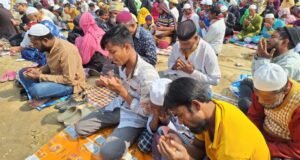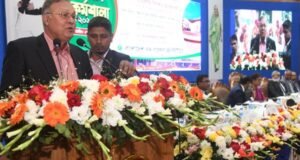 Rescue efforts are being stepped up to help those affected by the magnitude-7.5 earthquake which hit remote areas of Afghanistan and Pakistan on Monday.
Rescue efforts are being stepped up to help those affected by the magnitude-7.5 earthquake which hit remote areas of Afghanistan and Pakistan on Monday.
More than 360 people are known to have died, most of them in Pakistan, and at least 2,000 were injured.
Rescue teams have been sent to remote mountainous areas where the impact of the quake is still unclear.
The Taliban, which controls some areas affected, called on aid agencies “not to hold back” relief supplies.
A spokesman said Taliban fighters had been ordered to help the victims.
In another development, Pakistani officials said at least two glaciers in Pakistan’s Karakoram mountain range had burst and several others had cracked because of the earthquake, raising fears of flash-floods.
Image copyright AP Image caption Pakistani soldiers loaded relief goods on to a plane in Peshawar
Many people across the region, afraid of a new quake, spent the night sleeping outside in temperatures close to freezing.
“We have insufficient food and other aid,” said Abdul Habib Sayed Khil, police chief in Afghanistan’s Kunar province.
“It has been raining for four days and the weather is very cold.”
On Tuesday, the Afghan presidential palace tweeted that the death toll had risen to 115, with 538 people injured. It said that 7,630 homes, 12 schools and 17 mosques were among the buildings destroyed or damaged.
In a televised address, President Ashraf Ghani urged those living in affected areas to help the rescue effort.
The governor of Badakhshan province, Shah Waliullah Adeeb, said survey teams were heading into more remote areas on Tuesday but landslides had blocked roads and helicopters were needed.
Afghan victims included 12 schoolgirls killed in a crush as they tried to leave their classes in Taluqan, Takhar province.
In Pakistan, at least 248 people were killed and 1,665 injured, the national disaster agency said.
In Khyber Pakhtunkhwa province alone, authorities said at least 202 people had died, and more than 1,480 were injured. At least another 30 died in the north-western tribal areas.
Afghan and Pakistani press say quake is “wake-up call”
The track record of the disaster management authorities in Pakistan “is not sterling”, Pakistan’s Daily Times says bluntly, adding that lessons from the 2005 earthquake have not been learned.
The disaster authorities’ “presence in most vulnerable small towns is minimal while even in major urban areas their efforts are lacking in efficacy and credibility”.
“Let this episode jolt us into the awareness that it is high time we woke up and took disaster preparedness and response more seriously,” Pakistan’s Dawn says.
“The alarm bell has rung,” Afghanistan’s Mandegar agrees, with the Daily Afghanistan accusing the authorities of failing to confront natural disasters.
Hasht-e Sobh claims that most buildings in Kabul in the past decade are structurally unsound.
“Such irregularities are the result of administrative and financial corruption in government bodies,” it says, claiming that most school buildings funded by international organisations in the provinces are not earthquake-proof either.
On Tuesday, Pakistani Prime Minister Nawaz Sharif visited the district of Shangla, in Khyber Pakhtunkhwa, where at least 49 people were killed.
In a statement he said Pakistan was “capable enough to rescue and rehabilitate those affected”.
After the quake, Facebook launched its “safety check” feature allowing people in affected areas to tell their families they are safe. Google also launched its “person finder” service.
The US Geological Survey (USGS) reported that the earthquake was centred in the mountainous Hindu Kush region, 76km (45 miles) south of Faizabad, in Badakhshan province.
It was deep – more than 200km (125 miles) below the surface – which meant the shaking at ground level was less than for a shallow earthquake.
The USGS said a series of aftershocks – all measuring 4.0 or higher – had struck west of the original quake.
Residents of Kabul and the Indian capital Delhi were shaken by the earthquake and buildings in the Tajik capital Dushanbe were also damaged.
The region has a history of powerful earthquakes caused by the northward collision of India with Eurasia. The two plates are moving towards each other at a rate of 4-5cm per year.
In 2005, a magnitude-7.6 quake in Pakistan-administered Kashmir left more than 75,000 people dead.
In April this year, Nepal suffered its worst earthquake on record, with 9,000 people killed and about 900,000 homes damaged or destroyed.
Don't Miss
- Apasen Celebrates Eid with a Spectacular Talent Showcase at Valance Road Opportunity Zone
- Dhaka, Delhi to boost cooperation in media, film
- ‘Disparities in Bangladesh surpass those of Pakistan and British rules’
- Internet connection to face disruption for 1-hr before dawn on Friday
- Shanto, two others shortlisted for best sportsperson of year
 Weekly Bangla Mirror | Bangla Mirror, Bangladeshi news in UK, bangla mirror news
Weekly Bangla Mirror | Bangla Mirror, Bangladeshi news in UK, bangla mirror news




